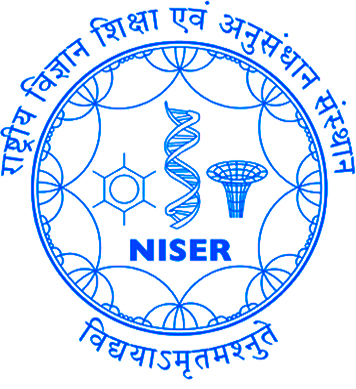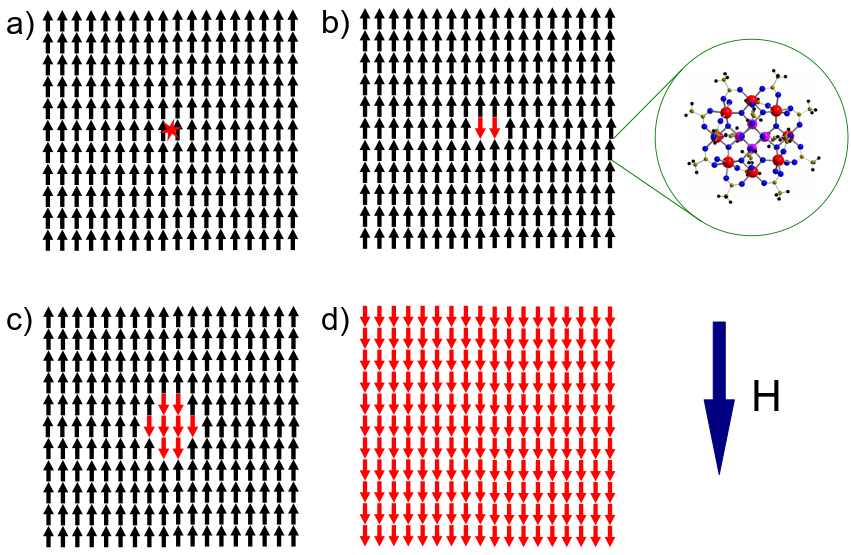





|
Single-molecule magnets (SMMs) are superparamagnets that exhibit magnetic hysteresis, typically associated with bulk magnets, while not having to rely on long range ordering. These essentially non-interacting tiny magnets can be ordered in macroscopic single crystals and are easily synthesized in large varieties and quantities. These molecular crystals exhibit the interesting phenomenon of a magnetic avalanche, which can be caused by the energy deposition from particle interactions. Through a continuing DOE Detector R&D funding, we have successfully demonstrated that magnetic avalanches can be triggered by particle interaction, as shown in the figures to the right. In the absence of an external magnetic field, the magnetic ground state of the SMM is doubly degenerate (see figure to the right) left. When a set of SMM crystals are first magnetically polarized and then the magnetic field is reversed, it places spins in metastable states which have long lifetimes at cryogenic temperatures. Localized deposition of energy in this crystal causes the relaxation of a small number of these metastable molecules, releasing the stored Zeeman energy. The released Zeeman energy heats up neighboring molecules so that they also flip, releasing their Zeeman energy cumulatively. This results in a magnetic ``burning'' (or deflagration) throughout the macroscopic crystal, wherein all the spins in the whole crystal flip, resulting in a measurable change to the magnetization and/or temperature of the crystal. The avalanche thus amplifies the effect of the initial energy deposition on the original magnetic quantum state. Given the high degree of tunability of SMMs with potential to reach meV sensitivity, the ability to synthesize a variety of SMMs according to our needs and the advantages offered by the SMM detector concept described above, this collaborative research will be a highly promising way to detect particles that deposit small amounts of energy such as single THz photons or sub-MeV scale Dark Matter, not measurable with current technologies. The composition of SMMs provides a natural variation of Z/A in the crystal, enabling efficient coupling of generic dark matter models to optical phonons. In addition, the SMM carries spin and is thus naturally capable of detecting spin dependent dark matter interactions. |



|
|
|